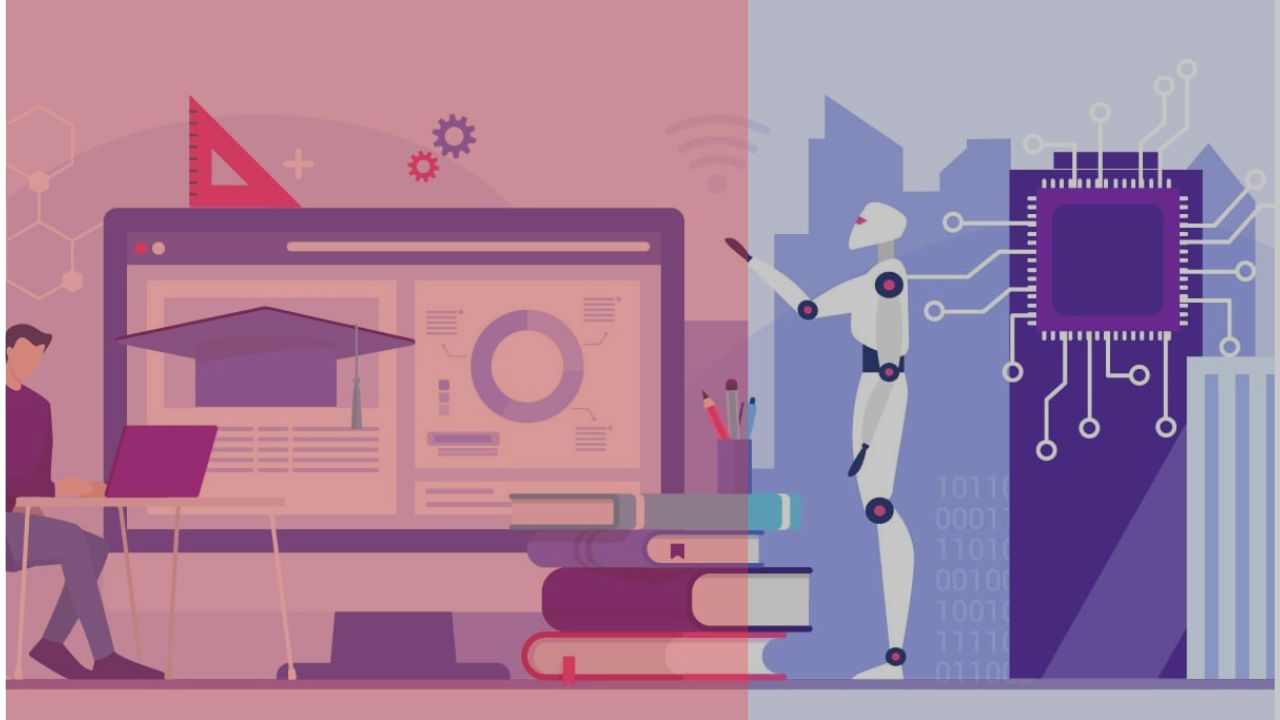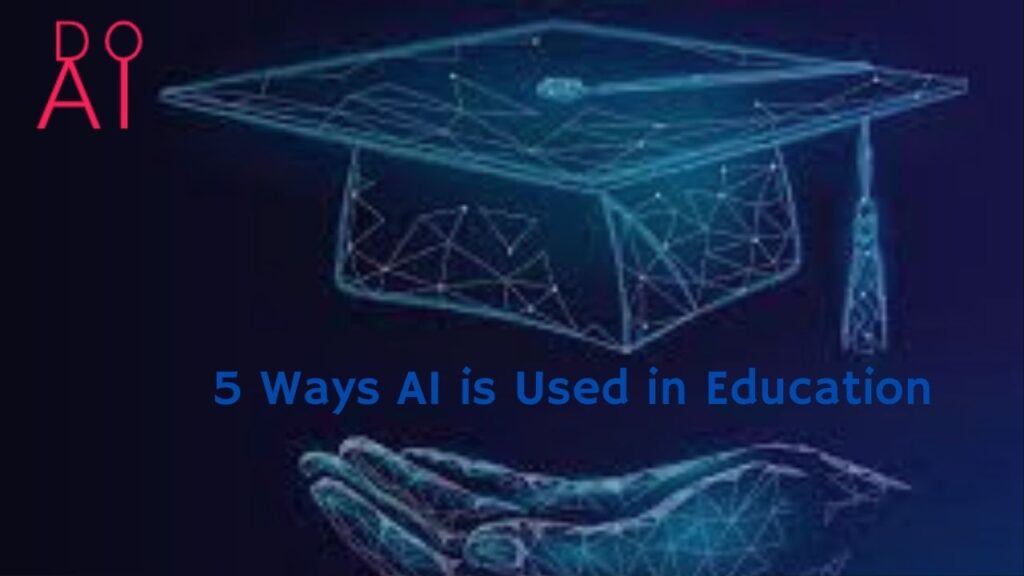AI has the ability to change education by making learning more personalized and adaptive, by automating administrative tasks, and by making students more engaged and improving their performance. This piece will talk about 5 ways AI is used in education.
Personalised learning:
AI can make personalised learning possible by looking at student data and making learning experiences that are tailored to each student. AI-powered systems can suggest learning materials and activities that are best for each student by keeping track of their progress and figuring out their strengths and weaknesses.
For example, adaptive learning platforms like Dreambox and Knewton, which are driven by AI, use machine learning algorithms to look at student performance data and make personalised suggestions for learning activities. This lets students learn at their own speed and in their own way, which can make them more interested and motivated.
Intelligent education Systems:
AI can also be used to make intelligent education systems that help and give feedback to students in real time. These systems use natural language processing (NLP) and machine learning to understand what students are asking and give them answers that are correct and useful.
For example, Carnegie Learning’s AI tutor gives students personalised feedback on math questions by looking at how they answered and figuring out where they need more help. This makes it possible for students to get personalised help that fits their needs, which can help them learn better.
Automatic Grading:
AI can automate administrative chores like grading, which can save teachers time and let them focus on more important parts of teaching. Machine learning algorithms are used by AI-powered grading systems to look at student answers and give marks based on criteria that have already been set.
For example, Turnitin’s Feedback Studio uses AI to check for grammar, spelling, and punctuation mistakes in student writing projects and give instant feedback. This lets teachers give students feedback in a timely manner and see where they need to better.
Predictive analytics:
AI can also be used to do predictive analytics, which can help teachers figure out which students are at risk of falling behind and give them more help. AI-powered systems can look at student data like attendance, grades, and behaviour to find trends and predict which students are likely to have trouble.
For example, the University of Texas at Austin uses a tool called “Degree Analytics” that is powered by AI to find students who are at risk of dropping out and give them specific help. This has helped the university keep more students and help them do better in school.
Virtual and Augmented Reality:
AI can also make it possible for students to have virtual and augmented reality experiences that can make them more interested and help them understand hard ideas. By mixing artificial intelligence (AI) with virtual and augmented reality (VR/AR), teachers can create immersive learning experiences that help students see and interact with abstract ideas.
For example, Pearson’s AI-powered virtual reality lab lets students study complex scientific ideas like the human body and molecular structures in a three-dimensional virtual environment. This lets students see and understand these ideas in a way that isn’t possible with more standard ways of teaching.
AI could change education by making learning more personalised and adaptive, by automating administrative jobs, and by making students more engaged and improving their performance. By using AI-powered tools and platforms, teachers can make classrooms that help students reach their full potential and are more effective and efficient.

AI has the ability to change the way people learn, but it also has its pros and cons. Let’s look more closely at some of the pros and cons of using AI in schooling.
| Pros of AI in Education | Cons of AI in Education |
| Customised learning opportunities | High cost of putting in place tools that use AI |
| Grading and administrative chores that work well | AI programmes could have a bias |
| Feedback and help for kids in real time | Concerns about privacy when collecting and analysing student information |
| Predictive analytics to find kids who are at risk | Too much dependence on technology and not enough interaction with people |
| VR and AR make people more interested | If the AI system isn’t set up right, there won’t be enough tailoring. |
Pros of using AI in education:
Personalized learning
AI can make it possible for each student to have a learning experience that is tuned to his or her needs and way of learning.
Efficient grading
AI can automate administrative jobs like grading, which can save teachers time and let them focus on more important parts of teaching.
Real-time input
Tutoring systems that are powered by AI can give students immediate feedback and help, so they can see where they need to improve.
Predictive analytics
AI can make it possible for predictive analytics, which can help teachers figure out which kids are at risk of falling behind and give them the help they need.
Virtual and Augmented Reality
AI-powered virtual and augmented reality experiences can make students more interested and help them understand difficult ideas.
Cons of using AI in education
Cost
Putting in place AI-powered tools and systems can be pricey, which can be a problem for many schools and institutions.
Bias
AI systems are only as fair as the information they learn from. If the data is biassed, so will be the AI system.
issues about privacy
There are privacy issues when it comes to collecting and analysing student data, especially when it comes to sensitive information like student behaviour and performance.
Overuse of technology
Using AI-powered systems and platforms too much can make it hard for students to connect with other people, which is important for their growth.
Lack of personalization:
AI can make learning more personalised, but if the system isn’t set up and built right, it can also lead to a one-size-fits-all approach.
AI has the ability to change education, but it’s important to think about its pros and cons carefully before putting AI-powered systems and platforms into place. By weighing the pros and cons of AI in education, teachers can make learning settings that are effective and efficient and help students reach their full potential.



